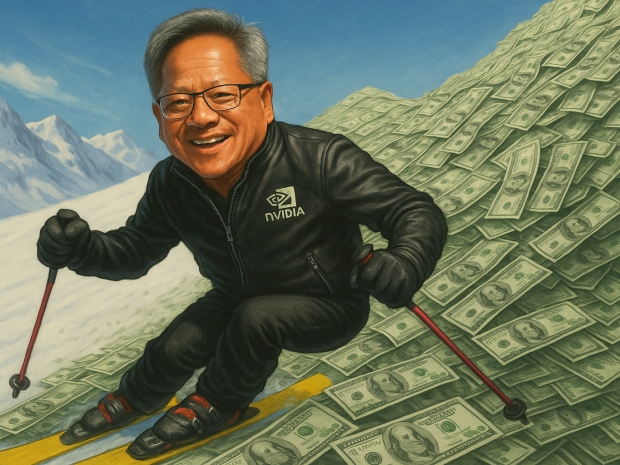The chip designer’s stock climbed about three per cent on Wednesday to $207.16, giving it a market cap of $5.03 trillion. The cocaine nose jobs of Wall Street nearly fainted at the milestone, which came after another week of AI-fuelled exuberance.
CFRA Research senior vice president Angelo Zino said, “They’re the linchpin of this AI trade.”
The Santa Clara outfit’s value now eclipses that of AMD, Arm, Troubled Chipzilla, ASML, Broadcom, Lam Research, Micron, Qualcomm and TSMC combined.
According to Dow Jones Market Data, Nvidia’s worth even tops entire S&P 500 sectors, including utilities, industrials and consumer staples.
Chief executive Jensen Huang said the company has shipped six million of its Blackwell GPUs and has orders for 14 million more.
Dan Ives, managing director at Wedbush Securities, said, “Nvidia’s stock is a barometer for this massive demand cycle,” adding that Huang is the “godfather of AI.”
Nvidia’s growth has been dizzying. It passed $2 trillion in March 2024, $3 trillion just 66 trading sessions later and by July 2025 it had sprinted past $4 trillion, overtaking Job’s Mob and Microsoft.
Investors’ giddy optimism comes despite murmurs of a bubble. Tech companies have been pouring hundreds of billions into AI data centres and chip contracts while loading up on debt, all while current revenue remains relatively small.
In September, Nvidia pledged up to $100 billion (about €92 billion) to ChatGPT-maker OpenAI to help the startup build AI data centres powered by at least 10 gigawatts of Nvidia systems. It has also been throwing cash at a variety of AI startups, which could backfire if spending cools, leaving it with thinner sales and overvalued stakes.
The company’s access to China remains a geopolitical wildcard. Washington’s negotiations with Beijing have previously included discussions over chip exports, and President Trump is expected to use Nvidia’s hardware as a bargaining chip during upcoming talks with Chinese leader Xi Jinping in South Korea.
Cumberland Advisors co-founder David Kotok said the company’s “remarkable valuation” will be “justified only if margins and profits continue on the current trajectory or even get better.”
Nvidia’s shares trade at around 33 times next year’s projected earnings, which is steep but not absurd compared with Tesla’s 210 times or Palantir’s even loftier multiple.
The company will report its third-quarter earnings on 19 November, an event that is shaping up to be the financial world’s version of the Super Bowl. Huang told investors this week that Nvidia expects half a trillion dollars in total sales over the next five quarters.

